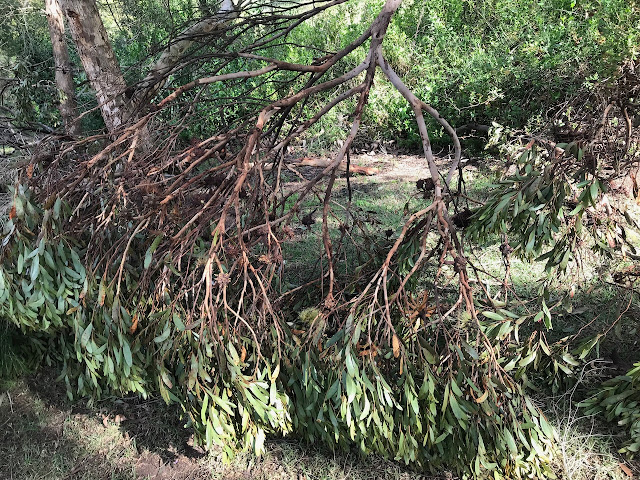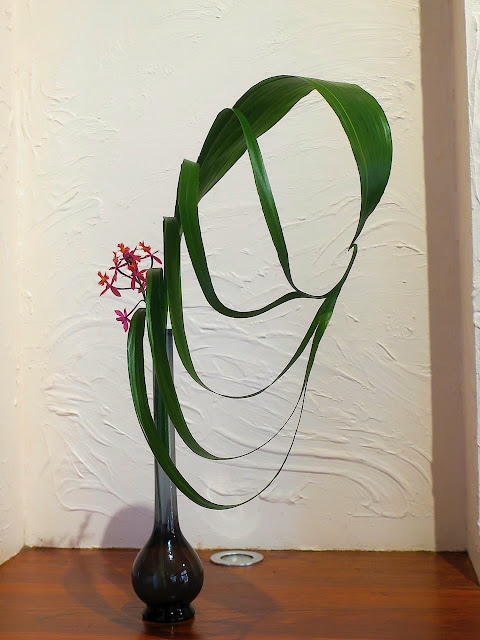TWO VESSELS and a WINDFALL
AUSTRALIAN NATIVE MATERIALS
Last week I posted a photo of my contribution to the Ikebana International Exhibition at the Labassa Mansion in Melbourne. Earlier this week I was delighted to receive a photo of my work by my colleague Lei Wang. Lei made good use of the Covid lockdowns by completing a photography course on-line.
* * * * *
The Consul-General of Japan for Victoria, South Australia and Tasmania and his wife are joint patrons of Ikebana International Melbourne Chapter. On a rotating basis, for special occasions, the five Ikebana Schools in Melbourne are called on to provide Ikebana in the Consul-General’s residence. A few weeks ago I was advised that it was the turn of the Sogetsu School. The event was a reception to mark the end of the term of office and pending departure later this year of the current Consul-General, Mr Shimada.
I had the privilege of making an Omukaebana, a welcoming ikebana, for the reception. In my planning preparation I thought it would be appropriate to create an Ikebana using only Australian native materials to express the unique beauty of our flora.
The other materials are, on the left side, Banksia praemorsa from the garden of my ikebana friends Rosemary and David. And on the centre right a striking pink Waratah Telopea speciosissima. I assume it to be a new hybrid. The petal-like bracts that surround the small inflorescence are quite long and loose looking. They made a good textural contrast to the strength and denseness of the Banksias.
Greetings from Christopher
22nd September 2024
COMBINING MATERIALS
Aileen's principal material was Acacia aphylla set in a clear glass vase. A floral focus of two pink orchid flowers has been set in the embrace of the entwined curving lines.
My ikebana this week is a partial re-working of an Ikebana I made at the AGM of Ikebana International Melbourne Chapter last month.
UNEXPECTED BEAUTY IN HEAT DAMAGED LEAVES
CURVING LINES on the FIRST DAY OF SPRING
In the garden the Crucifix orchid Epidendrum radicans is finally in the right place and is doing well. I decided to use it as the focus in a simple ikebana.
Long ago, in my pre-ikebana days, I bought this tall grey-glass specimen vase, which continues to be useful for single flowers. On this occasion I first placed a partially shredded Aspidistra leaf finding the best angle to show the graceful lines. The leaf leans toward the front and the shredded section falls in looping curves. The orchid inflorescence is placed at the rear.
In retrospect, I think I should have used two stems of the flowers to make the mass bigger.
1st September 2024






.jpg)













.jpeg)



















